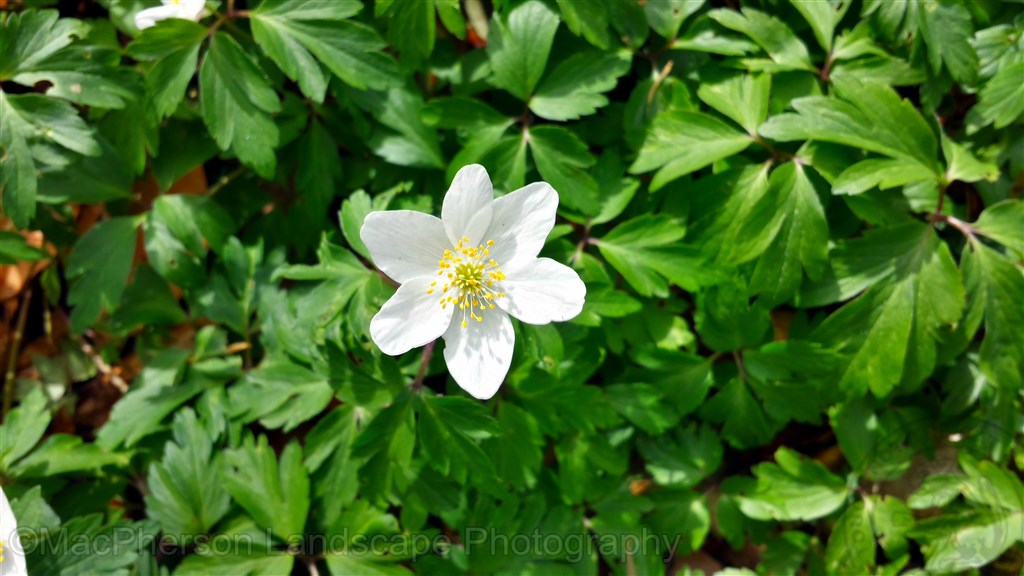The Wood Anemone ( Anemone nemorosa) is a member of the buttercup family, and is another early spring woodland flower which also indicates an ancient woodland.
Amongst the dark green background of leaves, under the trees, this pretty flowers’ expanse resembles little white stars.
Common names of this well known spring bloom are Windflower, Thimbleweed, and Smell Fox.
It spreads by root growth rather than by pollination, although Hoverflies do pollinate the plant. As is the case with some other species of flowers, they do not have true petals but are formed from the sepal of the plant which is the protective covering of petals. There are six sepals which take on the form of petals starting white at the top and gradually changing to a rose colour lower down the sepal.
As pretty and attractive as this perennial flower is, it is however poisonous to humans and animals.
There are many legends regarding the origin of the Wood Anemone from various countries and cultures regarding the origin of this primitive plant.
In Greek mythology, as Aphrodite grieved over the death of Adonis, her tears, as they fell to the ground, the Wood Anemone sprung, and is also linked to the deities Adonis, Anemos/Eurus, and Aphrodite/Venus.
Anemos/Eurus was the Greek god of wind and it was believed that the Wood Anemone came back to life when the winds of spring were due.
“Coy anemone that ne’er uncloses
Her lips until they’re blown on by the wind.”
“Where streams his blood there blushing springs a rose
And where a tear has dropped, a windflower blows.”
In Chinese culture it is named the Flower of Death, due to its paleness, in ancient Egypt it was symbol of an affliction, whereas in some areas of Europe it was associated with times of adversity. Interesting other folk-tales believed that the Wood Anemone was the flower in which Fairies would hide due to the petals closing at night and when the weather was foul.



